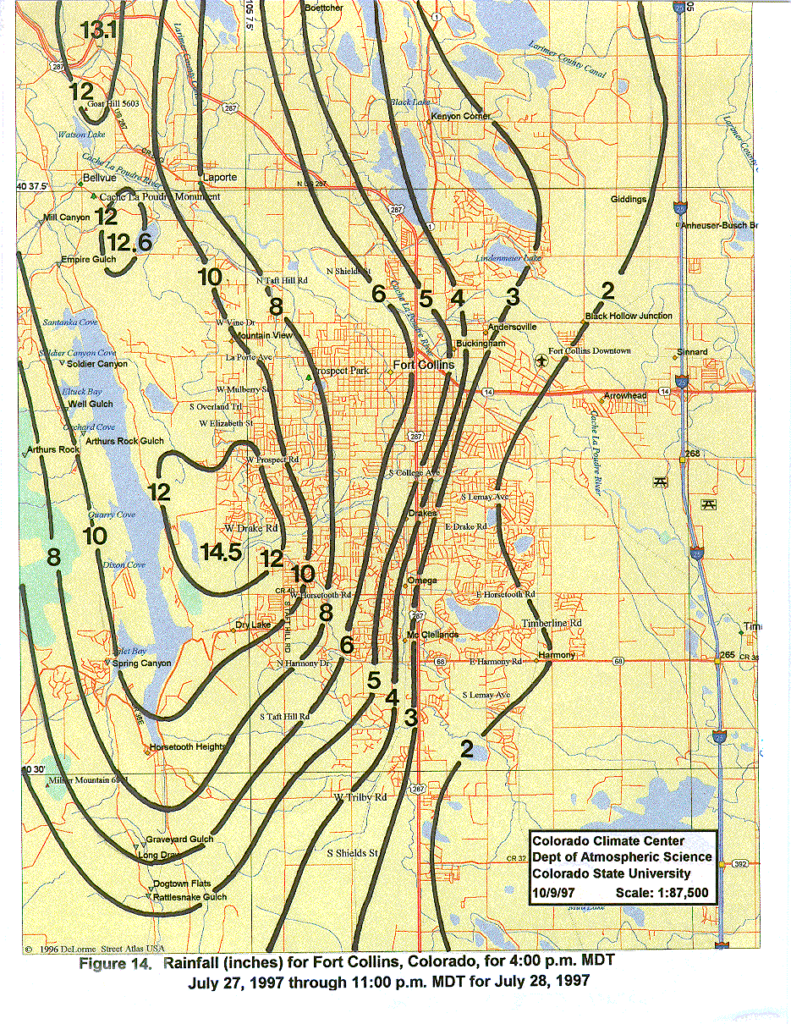It’s March, and we all know what that means. It’s time for everyone’s favorite tournament; March Ma… Well, let’s just say any time of year is a great time to avoid copyright infringement.
We all know about the NCAA’s 64 team, single elimination basketball tournament: March Madness. I want to talk about another tournament that happens this time of year: The CoCoRaHS Precipitation Absurdity tournament!

Up close shot of CoCoRaHS rain guage. Photo by Kristy Johnson. As seen at cocorahs.org.
Let’s start with the basics: CoCo-what-now? CoCoRaHS is the shorthand we use to describe the “Community Collaborative Rain, Hail, and Snow Network.” It is a network made up of over 20,000 community science volunteers across the United States, Canada, Puerto Rico, The Bahamas, and most recently, Guam. Each volunteer gives a few minutes of their time, and the cost of a CoCoRaHS-standard manual rain gauge, to submit precipitation measurements from their own backyard. These precipitation measurements are cataloged, and submitted via website or mobile app, and used to make beautiful maps of precipitation, hail, and snowfall across the country. For many observers, this practice becomes as integral a part of the morning routine as the first cup of coffee.
Why bother with these precipitation observations? Precipitation does not fall the same on all. Have you ever driven across town through a torrential downpour only to find the weather has been quiet at your house? These local variations in precipitation matter. CoCoRaHS was founded in response to the 1997 Fort Collins Flood. On the evening of July 28th, 1997, the east side of Fort Collins received 2-4” of precipitation; a vigorous thunderstorm to be sure, but part of western Fort Collins received 14.5”. This flood was not well warned and tragically killed five people.

Fort Collins Flood rainfall totals. Source: https://climate.colostate.edu/rain.html
The National Weather Service (NWS) has become the biggest power user of CoCoRaHS data. The measurements CoCoRaHS volunteers collect help the NWS validate forecasts, and in many cases, are used to either issue or confirm weather watches and warnings. The NWS is not the only beneficiary of these data. CoCoRaHS data are used by climate researchers, drought scientists, insurance adjusters, urban planners, emergency managers, and many more. All this to say, the simple act of measuring and reporting rain, hail, and snow may seem small or insignificant; but it is a community-strengthening endeavor.
The growth of this network over the years, and now decades, is amazing. CoCoRaHS started right here in Colorado (Fort Collins). The then Assistant State Climatologist, Nolan Doesken, assembled a team of high school interns to get a website up and running, and began recruiting rain gauge volunteers across the city. He never dreamed this project would go so far. Word of this program spread and eventually it became statewide. From there it spread to Nebraska, Wyoming, and New Mexico. By 2009 CoCoRaHS was in all 50 states. It has now expanded to two more US territories and Guam. Now over 20,000 strong, we are united under the common cause of better understanding weather and climate across the nation and beyond.
Now back to the tournament: If you’re somebody who enjoys the weather, is curious about how your location does for moisture, or just wants to help, I encourage you to sign up or learn more. There is no time like the present. CoCoRaHS has an annual competition between states to sign up the most volunteers (both in sheer numbers and per capita) every March. We used to call it “March Ma…” but now we call it “Precipitation Absurdity.” The winners get to hoist the “CoCoRaHS Cup” and carry bragging rights for the next year. Minnesota is running away with the contest this year for the fourth year in a row. I guess it’s true that Minnesotans do like to talk about the weather. Colorado is currently just shy of the top ten. We have a couple days left, and it’s not too late to make a play for a higher spot in the rankings. Please do consider signing up, or sharing the benefits with somebody you know.
Spring is always a fun time to be a CoCoRaHS volunteer in Colorado. We know almost anything can happen around here in spring: thunderstorms, hail, blizzards, or a nice, cold, soaking rainfall. CoCoRaHS volunteers have helped to catalog a record wet February day, a rogue snowband over Greeley, a large Denver area snowstorm with some “absurd” totals in the mountains, and a hail event-turned snow event. We are never quite sure what will happen next, but we do know it will keep us on our toes.

Snowfall totals in north-central Colorado: March 14th and 15th.
CoCoRaHS is a fun and engaging way to learn more about your weather, help scientists and practitioners, and strengthen your community. We sincerely hope you will consider helping in this “Precipitation Absurdity” challenge and join us or tell others about us this week.



